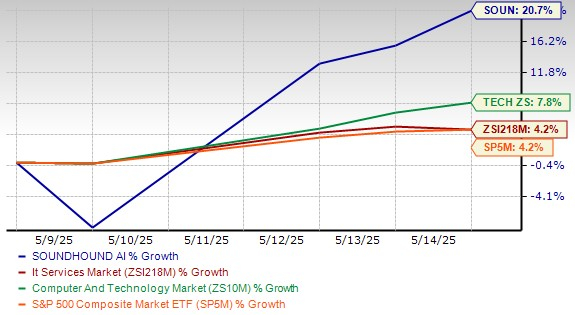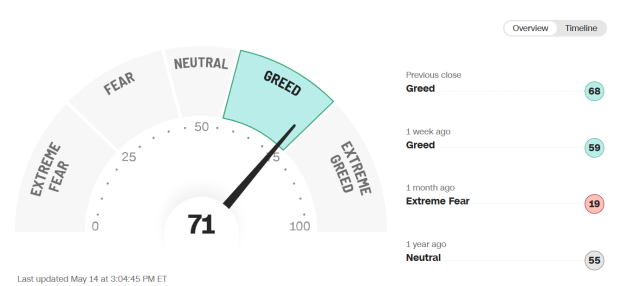Tariffs and Growth: Amazon’s Path to a $5 Trillion Market Cap
The story of the stock market in 2025 can be summed up with one word: tariffs. President Donald Trump has imposed baseline tariffs on goods from various countries, with a notably aggressive focus on China. For weeks, Chinese imports faced an average tax of over 100%, with some rates hitting as high as 145%. This situation has disrupted supply chains and made certain goods virtually unsellable in the U.S.
Amazon (NASDAQ: AMZN) is facing challenges due to these tariffs, especially since many sellers on its platform source products from China and other affected nations. The company’s stock is down 14% from its all-time high, valuing it at $2.2 trillion. Despite these obstacles, Amazon holds the potential to become the first company to achieve a $5 trillion market cap, surpassing giants like Microsoft and Nvidia. Here’s why this could happen.
Growth Opportunities in E-Commerce and Cloud Computing
To reach a market cap of $5 trillion, Amazon must maintain double-digit revenue growth. Last quarter, its top line expanded by 10% year-over-year, excluding foreign exchange impacts. The company stands to benefit from ongoing expansion in both e-commerce and cloud computing—sectors where it currently leads.
Currently, e-commerce accounts for less than 20% of total retail sales in the U.S., even after the pandemic hastened the shift toward online shopping. Amazon’s dominance in this market positions it well as this share increases annually. Internationally, Amazon’s online sales platforms in countries like India and Japan are nearing $150 billion in annual revenues, with significant growth potential over the next decade.
Furthermore, Amazon Web Services (AWS) is on track for even greater long-term growth. The trend toward cloud computing, with businesses moving away from traditional on-premises servers, is just beginning. This shift is further fueled by advancements in artificial intelligence (AI). The cloud computing market is projected to grow at a rate of 15% to 20% per year through 2030, aligning with AWS’s recent revenue growth of 17%. AWS generated over $100 billion in sales last year and could exceed $200 billion in annual revenues within the next decade, thanks to these favorable trends.

Image source: Amazon.
Profit Margin Expansion Ahead
Another positive factor for Amazon is its profit margin expansion. The fastest-growing segments are also the most profitable, likely improving overall margins in the coming years. For instance, AWS had an operating margin of nearly 40% last quarter, while its North American segment exhibited a margin of just 6%.
Within the North America segment, advertisement revenue grew by 19%, which likely contributes to higher profit margins. Additionally, subscription revenue rose by 11% year-over-year. Together, these segments generated almost $26 billion in sales last quarter.
Amazon’s net profit margin could rise from its current 10% to potentially 15% or even 20% over the next decade if the company maintains rigorous expense management. While heavy spending was a challenge in 2021 and 2022, management has effectively increased the company’s net margin to an all-time high. Coupling this with steady revenue growth could significantly elevate Amazon’s earnings.

Data by YCharts.
Innovative Projects with Long-Term Value
Amazon is also pursuing new ventures such as Project Kuiper, which aims to provide satellite internet access globally. This initiative will require an investment of around $10 billion to establish the necessary satellite constellation, with no revenue expected from Kuiper in the immediate term. However, the potential future revenue and enhanced profitability could add significant value to the company. Additionally, advancements in AI may further benefit Amazon’s e-commerce marketplace, although quantifying development costs remains complex.
In 2024, Amazon achieved $638 billion in annual revenue. If it sustains a 10% annual growth rate through 2030, it could surpass $1 trillion in revenue. Applying a 15% net margin would yield approximately $150 billion in earnings for Amazon by 2030. Currently, Amazon’s stock trades at a price-to-earnings ratio (P/E) of 35. This valuation, combined with projected earnings, positions Amazon to cross the $5 trillion market cap threshold.
While Amazon’s growth trajectory may not follow an exact path as outlined, the key takeaway is the potential for various tailwinds to drive its long-term success. Its leadership in multiple industries supports the notion that Amazon could be the first stock to achieve a $5 trillion market cap.
John Mackey, former CEO of Whole Foods Market, an Amazon subsidiary, is a member of The Motley Fool’s board of directors. Brett Schafer has positions in Amazon. The Motley Fool has positions in and recommends Amazon, Microsoft, and Nvidia. The Motley Fool has a disclosure policy.
The views and opinions expressed herein are the views and opinions of the author and do not necessarily reflect those of Nasdaq, Inc.




